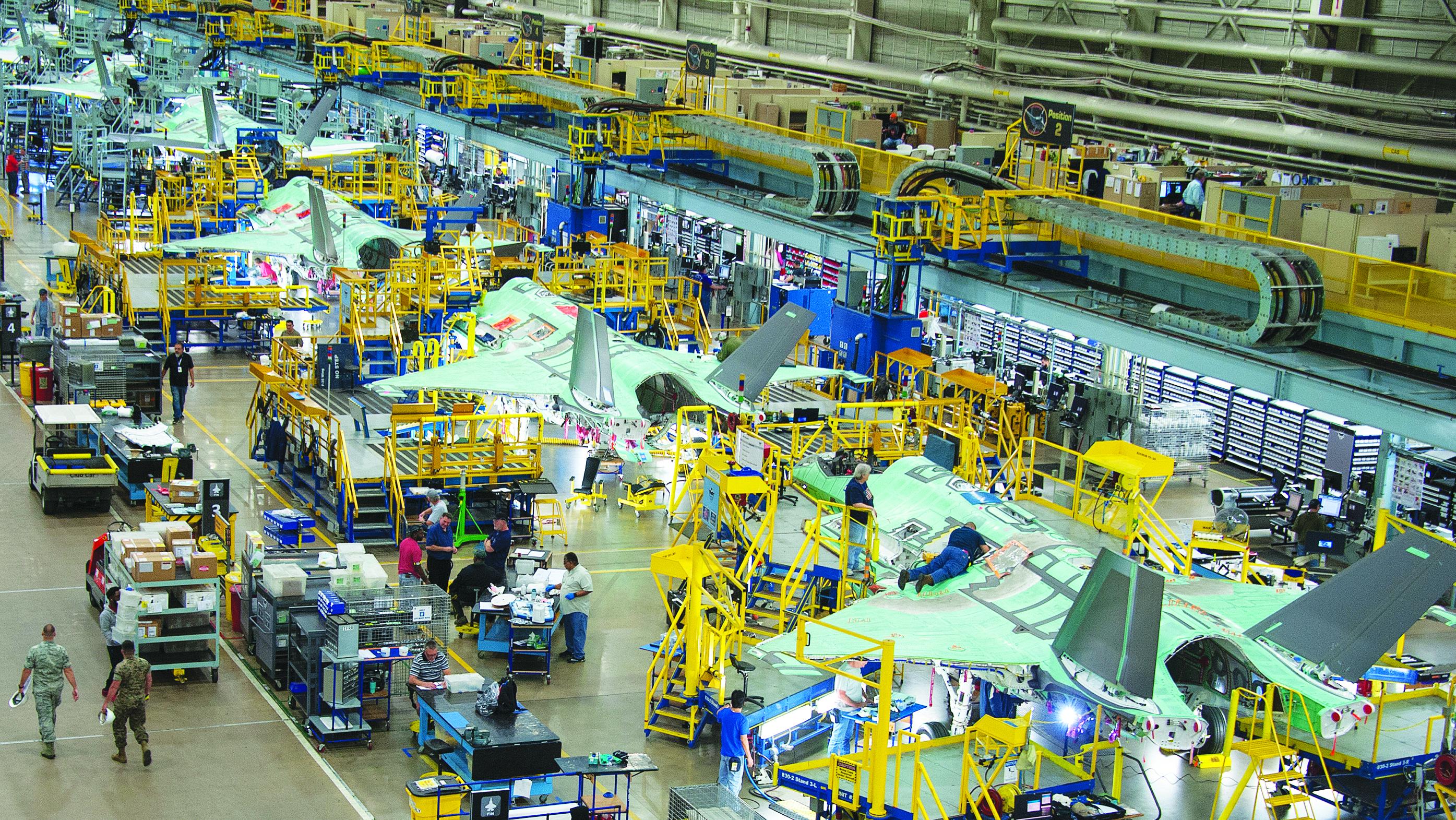
This was supposed to be a relatively easy year for Lockheed Martin’s F-35 production. As 2020 began, the stealth fighter program’s three-year growth spurt had subsided after annual deliveries more than doubled between 2017 and 2019. Lockheed planned to deliver 141 F-35s in 2020, only seven more than in 2019.
But the F-35 supply chain is not immune from the global disruption caused by the COVID-19 pandemic. After signaling during a first quarter earnings call in April that a production slowdown was likely, Lockheed confirmed the impact on May 19. The company issued a new forecast of 117-124 F-35 deliveries this year. If Lockheed is unable to recover in the second half, the slowdown would mark the first year-over-year decrease in F-35 deliveries since the program began.
- Lockheed Martin expects 117-124 F-35 deliveries in 2020
- Second-half ramp-up still possible
“However, we will accelerate production when we return to pre-COVID-19 conditions and could see this number decrease,” the company says.
The company’s new financial guidance reflects the lower F-35 delivery total, with net sales for the year falling to a range of $62.25-64 billion from $62.75-64.25 billion. Other large F-35 suppliers include Northrop Grumman (center fuselage, radar), Raytheon Technologies (engine, distributed aper-ture system) and BAE Systems (aft fuselage, electronic warfare suite).
It was not immediately clear which customers and variants would be affected by the potential shortfall of 18-24 F-35 deliveries in 2020.
The Defense Department is closely watching the F-35, its single-largest production system. So far, senior acquisition officials expect the overall impact of the novel coronavirus on weapon system production to be manageable. But the Pentagon leadership considers the military aircraft industry an exception. Although demand and domestic U.S. military spending remain intact, the military aviation supply chain’s links to the collapsing commercial aircraft market is causing delays.
“I think [military] aviation has had a more acute sensitivity to supplier disruptions, largely driven by the massive upheaval in the commercial aviation market,” said James Geurts, assistant secretary of the Navy for research, development and acquisition. “Many of the aerospace companies were blended between military and commercial, and with commercial just falling through the floor, their abilities to stay open and keep their workforce has been a little bit more challenged.”
Another sector Geurts is watching is the market for command, control, communications and computers and intelligence (C4I). “We’re trying to track all of it,” he says. “But the most immediate impact we’ve seen has been on aviation.”
Lockheed’s F-35 assembly line in Fort Worth was hit hard by the COVID outbreak in mid-April. One employee, Claude Daniels, died after reporting COVID-19-related symptoms to a supervisor. Another F-35 employee, who survived, broadcast a Facebook Live video from his hospital bed, pleading with his unionized co-workers to sanitize their workspaces even if it is not in their job description.
The company’s management has said that the F-35 assembly line adopted new protocols in response to the COVID-19 pandemic, which included regularly sanitizing equipment and quarantining employees exposed by co-workers or others to the virus.
The COVID-19 response is not the only pressure on the F-35’s production system. Lockheed exceeded the overall delivery target by three aircraft in 2019, but slower production of the less mature F-35C airframe nearly caused the company to miss the annual goal. To compensate, Lockheed moved up deliveries of four F-35As originally scheduled for 2020 to the end of 2019, allowing the company to beat the delivery target by three aircraft instead of missing it by one.
Before the impact of the virus, the F-35’s global supply chain was already strained by the three-year production ramp-up from 2017 to 2019. Late part deliveries jumped to 10,000 in 2019 from 2,000 in 2017, according to a May report by the Government Accountability Office (GAO). Monthly parts shortages, meanwhile, leaped to 8,000 in July 2019 from 875 a year before, the GAO says. The shortages represent a fraction of the 300,000 parts in each F-35, but the trend offered a glimpse of the pressure on the supply chain to meet demand during the ramp-up.






Comments